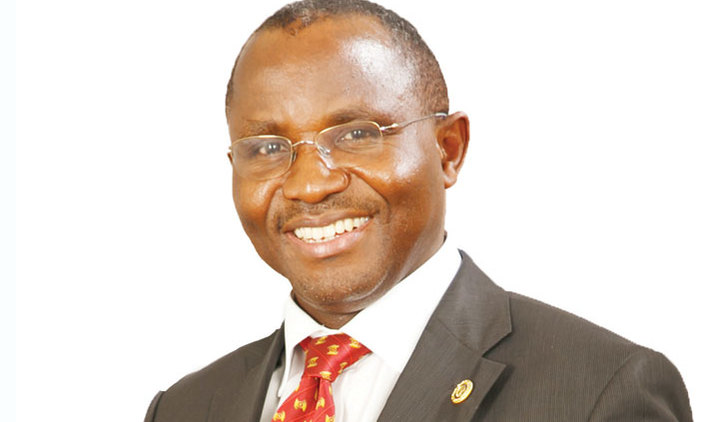On February 15, 2017, the Bank of Uganda (BoU), Uganda’s Central Bank cut the Central Bank Rate (CBR), a benchmark lending rate for commercial banks, to 11.5%, down from 12% in December 2016. Prof. Emmanuel Tumusiime-Mutebile, the Governor, BoU, said that a cautious easing of monetary policy was warranted to support economic activity. “The easing will also be consistent with achieving the annual core inflation target of 5 percent over the medium term,” Mutebile said. BoU has been reducing the CBR since April 2016. Commercial banks have also been reducing lending rates albeit at a slower pace. Uganda’s lending rates have remained high, currently averaging 22.37%, something that has continued to haunt the private sector. Following BoU’s further easing of the CBR in February, a number of banks have revised their prime lending rates downwards, citing prevailing economic conditions. The changes mostly apply to loans in local currency both new and existing.
In simple terms, prime lending rates are interest rates charged by banks to their largest, most secure, and most creditworthy customers on short-term loans. This rate is used as a guide for computing interest rates for other borrowers.
Expensive, Affordable Banks
Following the recent announcements by banks in changes made to their prime lending rates, in no particular order, we bring you banks with highest and lowest lending rates. This will go a long way in helping you make an informed decision on which financial institution to transact business with.
Standard Chartered Bank
Standard Chartered Bank recently reduced its base lending rate to 21% per annum. This new rate will become effective on March 17, 2017.
DTB
Diamond Trust Bank (DTB) has reduced its prime lending rate to 22.5% per annum, down from 24% (with a floor rate of 20%). The new rate became effective on March 1, 2017.
UBA
United Bank for Africa (UBA) will effective March 20, 2017 reduce its prime lending rate to 20% per annum, down from 24%.
Housing Finance Bank
Housing Finance Bank has announced that effective March 20, 2017, its prime lending rate will reduce to 21% per annum, down from 23%.
Ecobank
Effective March 22, 2017, Ecobank says its prime lending rate will reduce to 20.5% per annum, down from 23%.
Finance Trust Bank
Effective March1, 2017, Finance Trust bank reduced its prime lending rate to 23% per annum, down from 25%.
dfcu
dfcu has announced that effective March 22, 2017, its prime lending rate will reduce to 21%, down from the previous 22%.
Orient
Orient banks has announced that effective March 23, 2017, its base lending rate will reduce to 22%.
Stanbic
Effective Apirl1, 2017, Stanbic bank will reduce its rates to 19.5% per annum from 20%.
KCB
KCB says effective March27, 2017, its prime lending rate will reduce to 22%.
Exim Bank Uganda
Exim Bank will effective March27, 2017 reduce its prime lending rate to 22.5% per annum, down from 24%.
NC Bank
NC Bank has announced that effective April1, 2017, its prime lending rate will reduce to 22.5% per annum.
Bank of Africa
Bank of Africa has also notified its customers that effective April 1, 2017, its prime lending rate will reduce to 22% per annum, down from 24%.
Centenary
Centenary bank will effective April 1, 2017, reduce its prime lending rate to 21%.
Finance Trust Bank
Effective March23, 2017, Finance Trust Bank has announced that it will cut its prime lending rate to 23% per annum.
CBA
Commercial Bank of Africa (CBA) has said it will reduce its prime lending rate to 22.5% per annum, down from 23.5%. This new rate will become effective April 6, 2017.
Noteworthy, while banks are easing their lending rates, they generally remain high and prohibitive for many. It is also important to note that as a result of high lending rates and a wobbly economy, a number of borrowers have found it hard to repay the loans. This has in turn resulted into a number of banks choking on high Non Performing Loans (NPLs) and consequently a reduction in profits.
“The rise in NPLs is likely to increase risk aversion amongst lenders and consequently weaken private sector credit growth going forward, which could in turn affect economic activity,” BoU’s Monetary Policy Report for February 2017 reads in part.







Thanks for the information.
I see Stanbic bank responding fairly to it’s customers at a PLR of 19.5
since the CBR is now down to 10%, I suggest they reduce further.
I’m struggling with a loan in some bank at 23%, and I’m wishing (planning) to transfer to stanbic bank, uganda limited.
That’s my opinion.